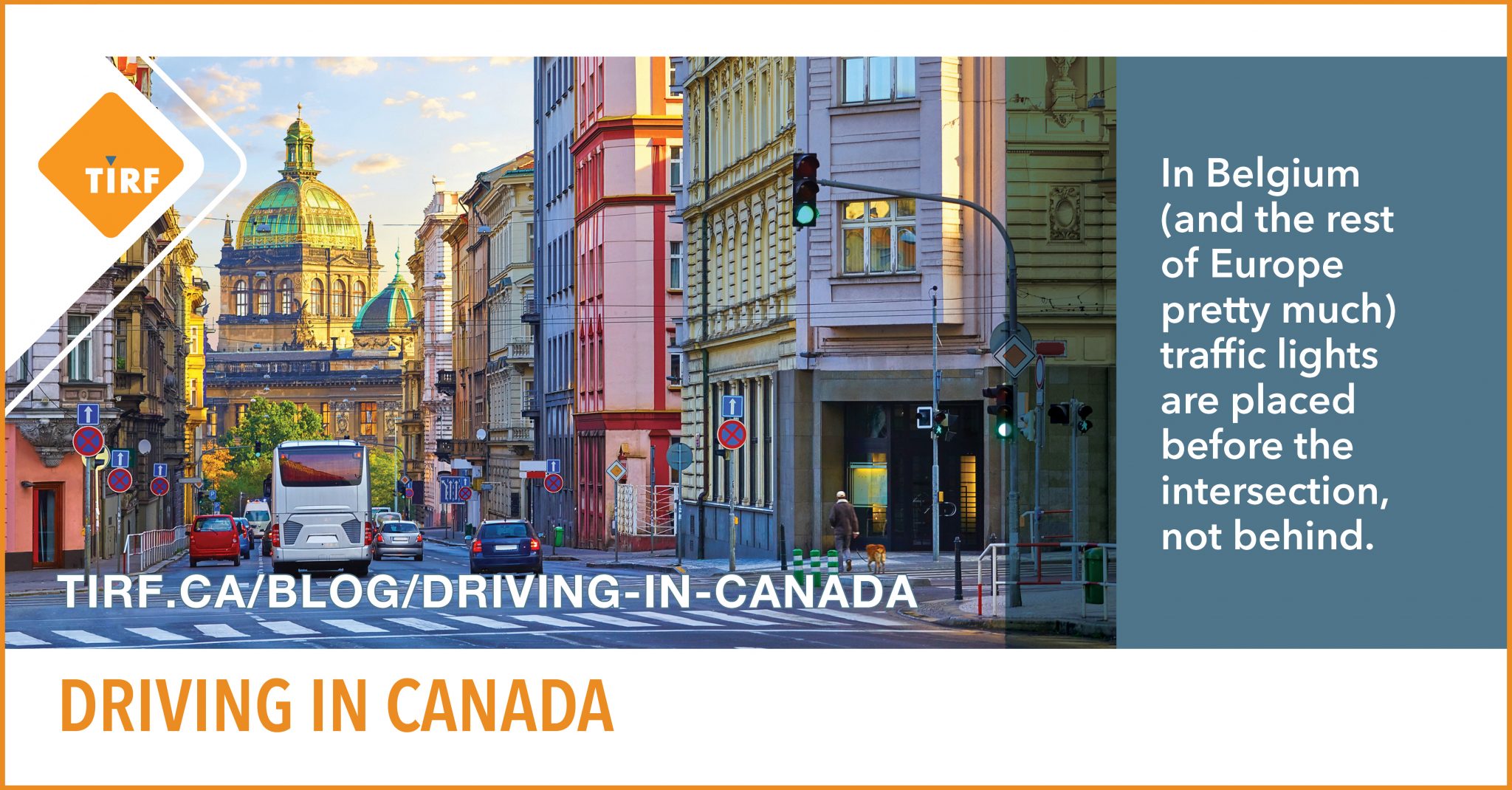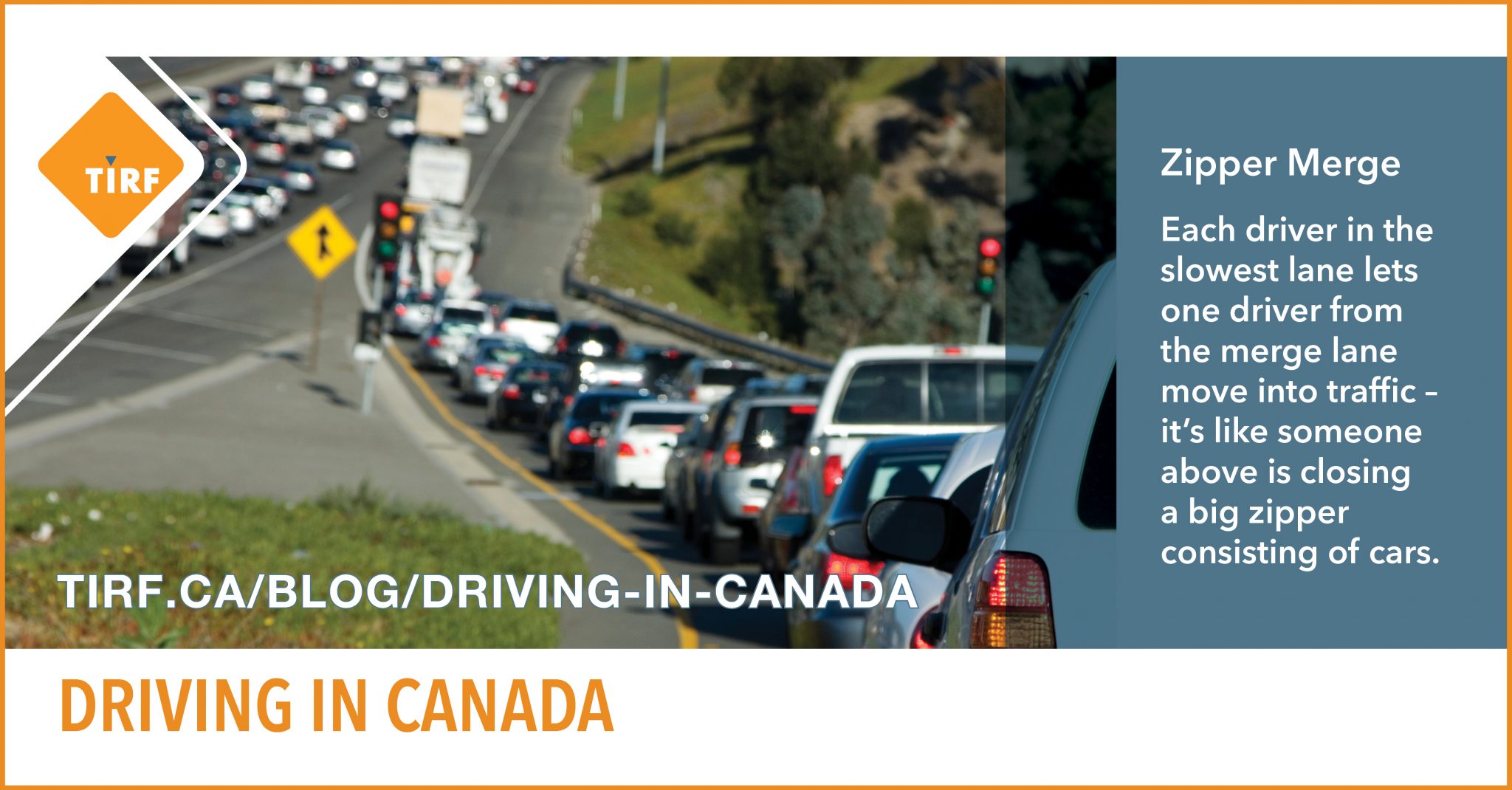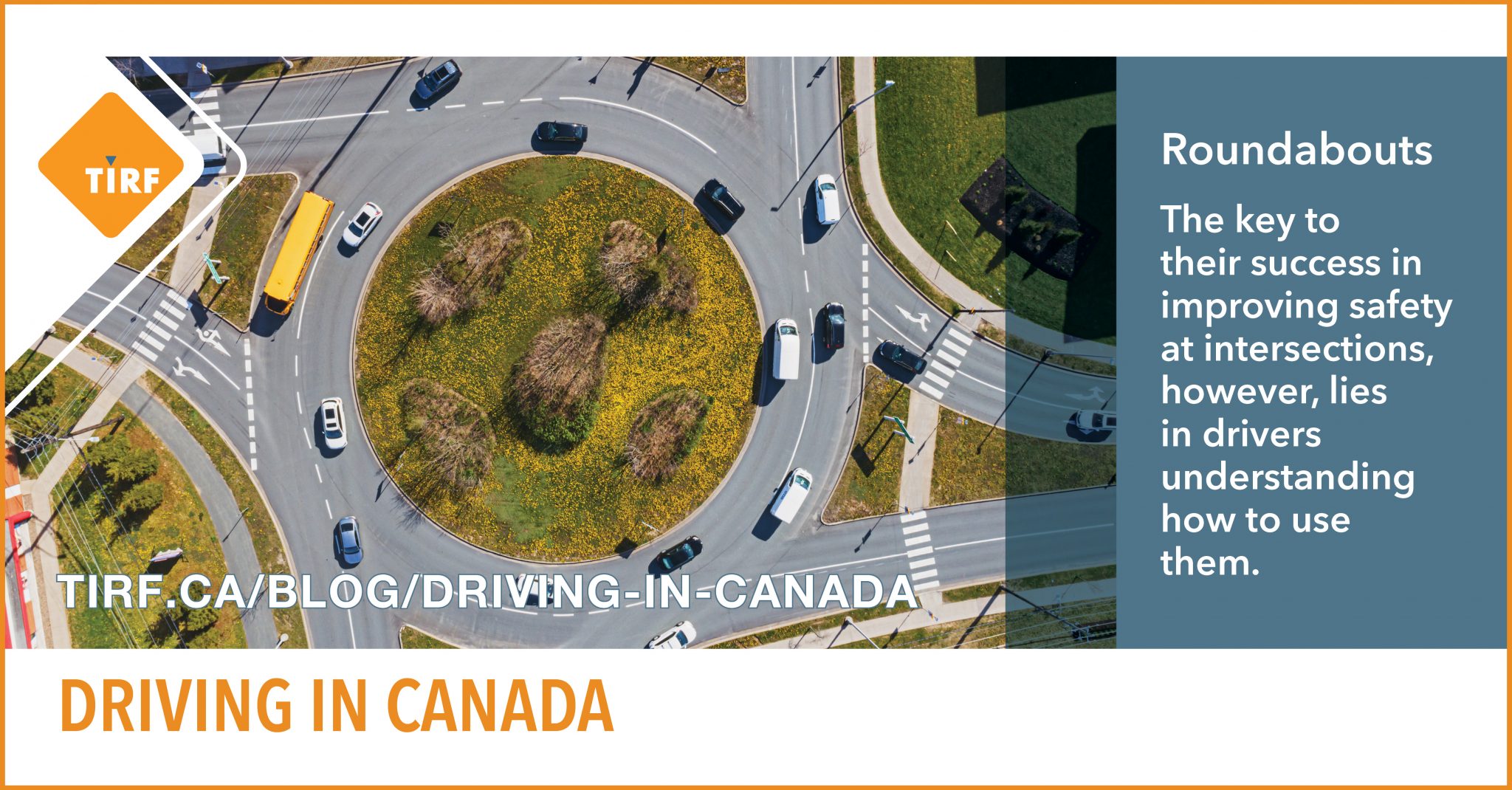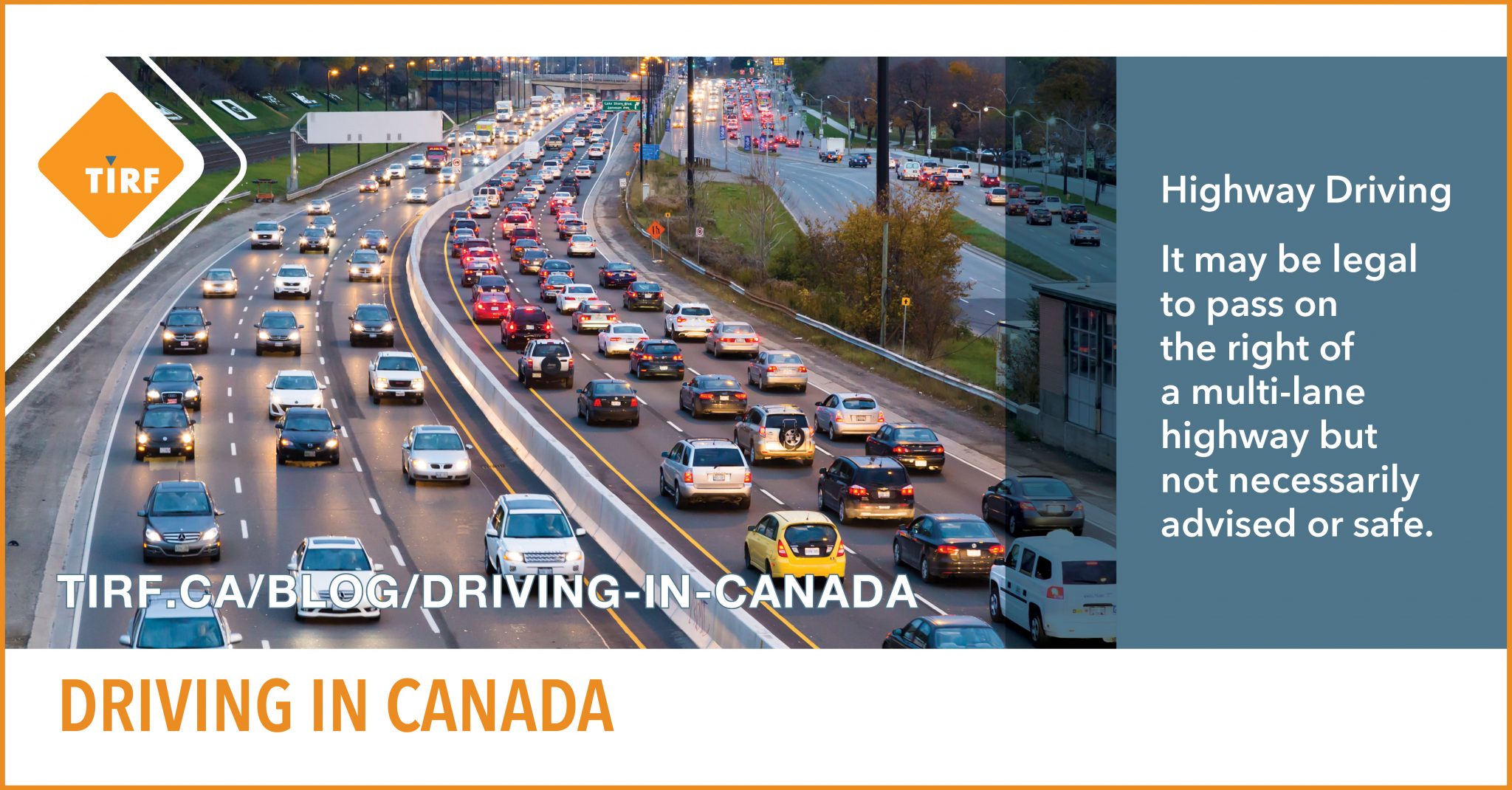Oh Canada, my new home and native land
In 2005 I moved to Canada. I had lived my entire life in Belgium up to that point. I was excited about many things in my new home country, not in the least that I could get my Canadian driver’s licence without too much hassle. Thanks to a bilateral agreement between Canada and Belgium I only had to pass an eye test, et voilà, I was now in possession of this coveted document. Little did I know that passing the eye test wasn’t really preparing me for the driving ahead. I had only driven a few times in Canada and the US before, so it wasn’t all new…but still.
Traffic lights are behind the intersection dummy, not before!
For starters, everything looks different. While the differences are subtle, those of you who have driven in a foreign country before will know what I mean – and I’m not even talking about driving on the left like in the UK or Australia. The entire street view is new with traffic signs having different colours, traffic lights being placed not before but just behind intersections and street furniture in different shapes and sizes. While this different context doesn’t necessarily make it riskier for an unfamiliar driver, it certainly requires more attention from the driver to stay safe on the road…especially if you don’t want to end up coming to a full stop at a red light in the middle of an intersection. Yes, in Belgium (and the rest of Europe pretty much) traffic lights are placed before the intersection, not behind.
Right turn on red
Another big difference is right turns on red are not allowed in Europe. I learned quickly it’s the opposite in – most of – North America when sitting at a red light with my right signal on; those behind me kindly nudged me to go with lots of honking.
By the way, did you know that a left turn on red is also legal on one-way streets in several jurisdictions? Check out these links if you want to learn more:
- https://www.ontario.ca/document/official-mto-drivers-handbook/traffic-lights
- https://www.drivesmartbc.ca/turns/right-turn-red
- https://www.theglobeandmail.com/drive/mobility/article-when-is-it-not-legal-to-turn-right-on-a-red/
But what about the merging?
What took me longer to get used to is the merging. I observed that merging was done differently, often with Canadian drivers coming to a full stop at a yield sign at the beginning of a merging lane or alternatively, driving to the end of the merge lane and stopping while waiting for a break in traffic. Granted, I haven’t done any scientific research on this, but it seemed to me this was commonplace, or at least not a rare occurrence. If you don’t know, it’s easy to rear-end someone who stops unexpectedly at a yield sign when they have a merge lane to enter the traffic flow. Luckily, I never have never struck a driver who stopped and I have adjusted just fine to this odd practice. As a rule, I aim to speed up when entering a merge lane so I can safely move into the stream of traffic, but I know better than to assume the driver ahead of me is doing the same. This is very different in Europe, where the zipper merge is commonplace – I just call it “zippering” – whereby each driver in the slowest lane lets one driver from the merge lane move into traffic – it’s like someone above is closing a big zipper consisting of cars.
If we can just make the zipper merge technique a standard practice, it can greatly increase the flow of traffic. Earlier this year, CBC ran a story on the New Brunswick Ministry of Transportation and Infrastructure releasing a public awareness video to help drivers embrace the concept in advance of construction season. “We want people to start using this technique because it’s faster, it moves traffic faster, and … we want to help reduce frustration,” Minister Jill Green said. “We want everybody to be calm and enjoy the driving experience, and to keep construction workers and contractors safe.”
Roundabouts
This blog wouldn’t be complete without talking about roundabouts as well. They have been around in Europe much longer than in Canada, so I was pleasantly surprised to learn there was one in Ottawa as well…until I found out the merging onto that roundabout, well, let’s say wasn’t as smooth as what I was used to in Belgium. More recently, roundabouts have become more common across North America due to their proven safety benefits, and drivers are slowly learning how to negotiate them.
My colleagues across Canada tell me they’re becoming more popular in Canadian cities which is great to hear from a road safety perspective. The key to their success in improving safety at intersections, however, lies in drivers understanding how to safely use them.
And the highway driving?
The other thing that really stood out to me was the different behaviour on highways. I recently did an interview with the Globe and Mail about the legality and safety of passing on the right on a multi-lane highway. The gist of it is that it is legal in most of Canada, but not necessarily advised or safe. This is what I had to say: “I was born and raised in Belgium – and, there, slower traffic drives on the right, you pass on the left and once you’ve passed, you go back to the right […] In North America on a three-lane highway, you’ll see cars who are slower in middle lanes and cars are passing on the left and right – for me that was weird to adjust to.” The fact is that passing on the right leads to more manoeuvres and potential conflicts. So, if slower traffic consistently drives in the right lane, passing on the right is no longer needed. This concept is reinforced by keep right and let others pass legislation in many provinces.
So, are Canada’s roads safer than Belgium’s?
You are probably wondering by now whether Canada is a safer country for driving than Belgium or vice versa. I could list a series of stats to show you, but that’s not the point of my story. My point is that moving to Canada taught me how important it is to keep your hands on the wheel, your eyes on the road and your mind on the driving task all the time.
While there are differences you have to adjust to when driving in another country, those differences quickly become predictable. What’s not predictable, however, is how traffic situations can rapidly change, out of the blue. The only way to prepare for this is by taking your responsibility as a driver seriously.
Check out our educational resources to find out more about taking driving seriously at www.tirf.ca.
#MySafeRoadHome blog author: Ward Vanlaar, TIRF COO, is a statistician and criminologist whose main fields of interest are traffic enforcement issues, risky driving behaviours, young and senior drivers, statistics and methodology, data management, safety performance indicators, and implementation of road safety programs. Originating from Ghent, Belgium and now residing in Ottawa, Ontario, he became a Canadian citizen in 2012 and has visited many parts of Canada.
Source documents and resources:
Why you’re soon going to be seeing, and doing, a lot of zipper merges, March 2022, CBC. https://www.cbc.ca/news/canada/new-brunswick/zipper-merge-campaign-jill-green-1.6394876
Government of Alberta, Traffic Circles and Roundabouts https://www.alberta.ca/traffic-circles-and-roundabouts.aspx
Is it legal and safe to pass in the right lane? August 2022, The Globe and Mail, Jason Tchir https://www.theglobeandmail.com/drive/mobility/article-is-it-legal-and-safe-to-pass-in-the-right-lane/
Government of British Columbia, Keep Right, Let Others Pass https://www2.gov.bc.ca/gov/content/transportation/driving-and-cycling/road-safety-rules-and-consequences/keep-right
Action2Zero website, Traffic Injury Research Foundation https://action2zero.tirf.ca





